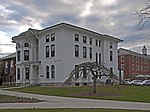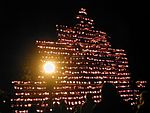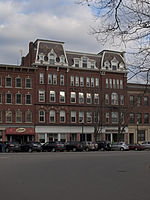The Branch

The Branch is a 2.6-mile-long (4.2 km) river located entirely in the city of Keene, in southwestern New Hampshire in the United States. It is a tributary of the Ashuelot River, itself a tributary of the Connecticut River, which flows to Long Island Sound. While itself a very short river, The Branch is formed by the confluence of the much-longer Otter Brook and Minnewawa Brook and was sometimes considered in the past to be part of Otter Brook. A 1982 decision by the federal Board on Geographic Names established the name "The Branch". Variant names cited by the Board include "Branch of Ashuelot", "Otter Branch", and "Otter Brook".The Branch is paralleled for its entire length by New Hampshire Route 101.
Excerpt from the Wikipedia article The Branch (License: CC BY-SA 3.0, Authors, Images).The Branch
Keene
Geographical coordinates (GPS) Address Nearby Places Show on map
Geographical coordinates (GPS)
| Latitude | Longitude |
|---|---|
| N 42.918888888889 ° | E -72.278611111111 ° |
Address
03435 Keene
New Hampshire, United States
Open on Google Maps










